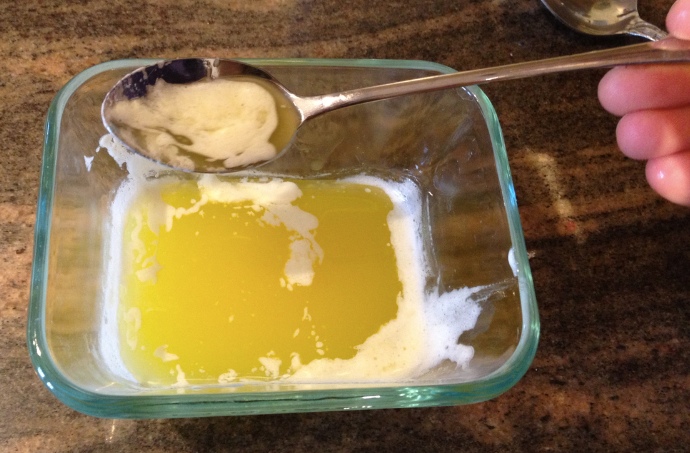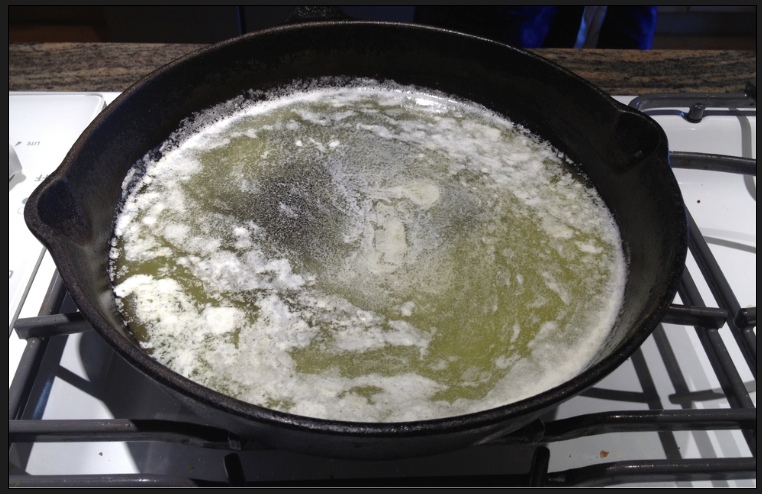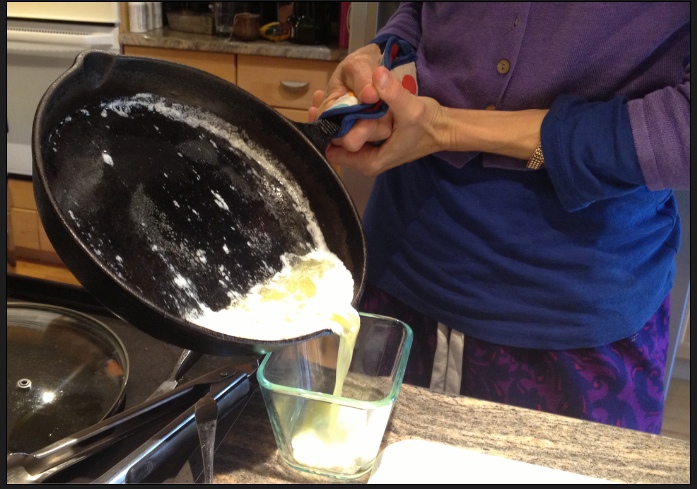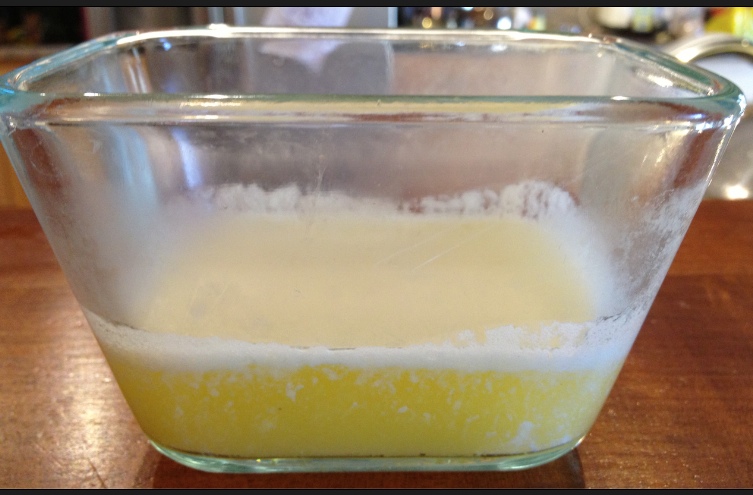Gee, how do I make Ghee?
Oh, I can hear my dad laughing at that headline! Another version was “Gee, what the heck is Ghee?”
Ok,now that that’s out of my system, let’s figure out what it is and how to make it at home to save you bundles…
Ghee is a clarified butter, which has been through the process of having the milk fat removed, yielding a butter that is relatively free of any milk or casein proteins, making it easier for most people to digest. It’s also a healthier fat, and one of the fats of choice for those following an allergy-free and Paleo diet. My nutritionist recommended that I eliminate any vegetable oil high in polyunsaturated fatty acids and Omega-6, such as corn oil, peanut oil, soybean oil and grape seed oil. In case you don’t know, polyunsaturated fats contribute to oxidation and free radical damage in the body, which is linked to heart disease, cancer, Alzheimer’s disease, autoimmune diseases and premature aging. Pretty scary stuff!
As Natural News puts it, they sit on the grocery store aisles, appearing rather innocent. They are clear and odorless – mainly because they have been bleached and deodorized with chemicals after high-heat processing has turned them rancid. And, interestingly enough, they are touted as a health food that can save your heart.
So while my oils of choice are Coconut and Olive, occasionally a recipe just isn’t the same without the distinct buttery flavor that can only come from real butter. And since Ghee can be pretty costly, I turned to a good friend of mine who has been cooking allergy-free meals for many years, for a lesson on how to make my own Ghee.
As she puts it, it’s pretty simple. Ideally, you start with a grass-fed butter, and follow these quick, simple instructions.
STEP1: First, you heat a cast iron skillet over high heat and let it get nice and hot for a few minutes.
STEP 2: Reduce the heat to medium low and add a stick of grass-fed butter.
STEP 3: Let the butter melt for a few minutes until completely melted.
STEP 4: Pour slightly cooled butter into a dish that leaves you room to scrape the fat off the top.

STEP 5: Gently slide a spoon across the top of the butter and remove all milk fat from the top layer.
Voila! You have successfully made your own Ghee. Remember that this is not a full-proof method of ensuring all milk fats are gone, so if you have a milk protein/casein allergy Ghee is probably not going to work for you, but it’s a better use of better that eliminates most traces of casein leaving an easier to digest, healthier end product.
We use Ghee to butter toast, in place of butter in recipes, and generally anywhere you would typically use butter. This version can be used in exactly the same way, and saves you bundles on the store bought Ghee which can run up to $15 per jar.
Easy, healthy and cheap. Three of our fave things!






How to: Make your own Ghee in 5 simple steps: Gee, how do I make Ghee? Oh, I can hear my dad… http://t.co/NWSPTdCa via @MyInspiredEats
How to: Make your own #Ghee in 5 simple steps. Remove the #milk fat and create a healthier #butter in minutes! http://t.co/sJE22CcI
Brilliant – you are right, that is easy. I am gearing up for a Whole30, so this will come in handy. Thanks.
I had someone ask about making ghee recently – here’s a quick tutorial!… http://t.co/bvDDoVPG8U
How do you pronounce Ghee?
Hi Kathy! It’s more of a hard G, not a Jha sound, but a G sound 😉 And not “gee” as in, gee I really don’t know how to answer her question 🙂